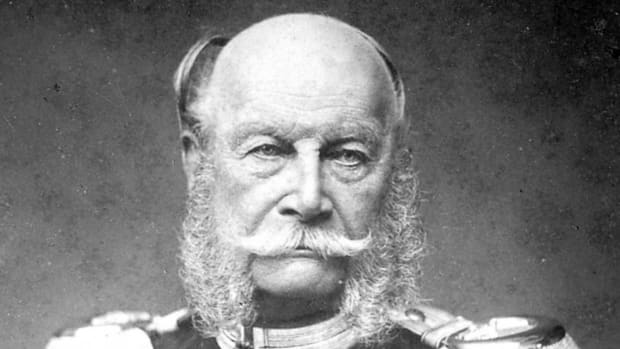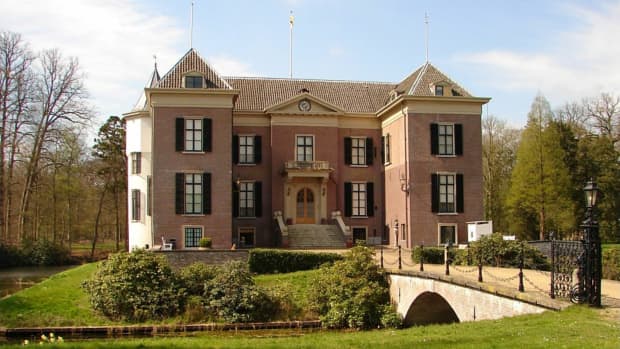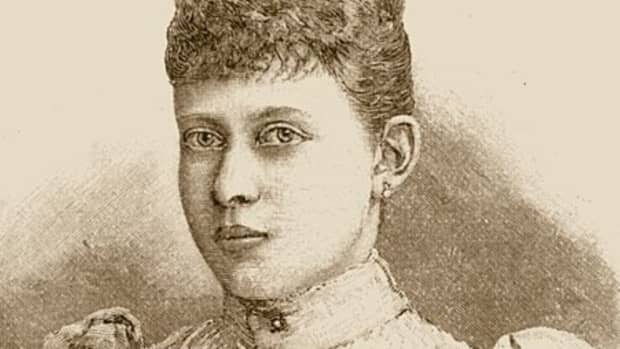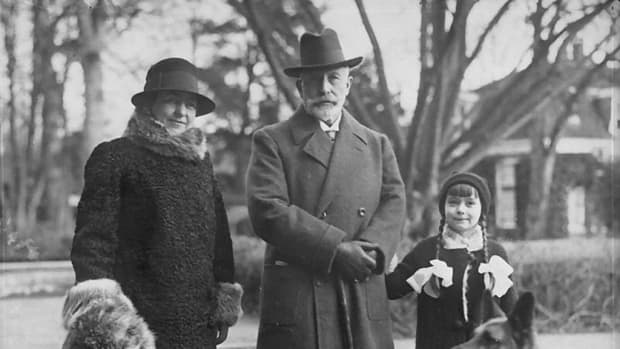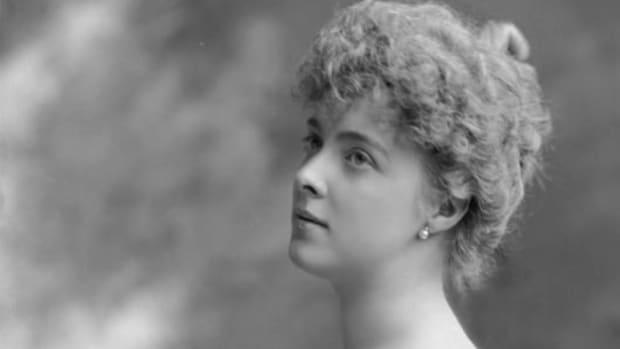Germany's Kaiser Wilhelm II's Eldest Son "Little Willie"
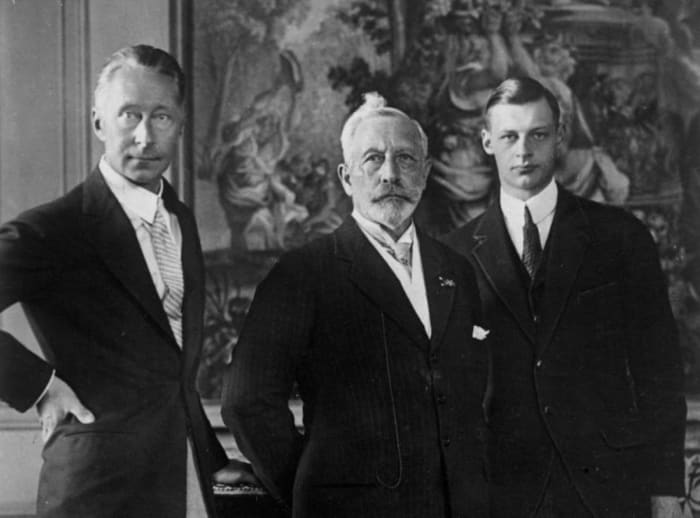
Kaiser Wilhelm II stands between Crown Prince Wilhelm "Little Willie" to his left and Prince Wilhelm (grandson) to his right.
Wikipedia/Bundesarchiv, Bild 102-01280 / CC-BY-SA 3.0
The Kaiser Without a Throne
Kaiser Wilhelm II (1858-1941) is remembered in history as the leader of the German Empire, a man who drew millions of people into the First World War in 1914. This decision to fight for superiority, made with or by his military, led to the fall of the House of Hohenzollern and the creation of a republic. His son and heir, Crown Prince Wilhelm, was left redundant in 1918.
When Prince Friedrich Wilhelm Viktor August Ernst of the German Empire and Kingdom of Prussia was born on the 6th of May 1882, the German Empire rejoiced. The 85-year-old Kaiser (Emperor) Wilhelm I knew that the succession was secure. His son, Crown Prince Friedrich, was next in line, and his son Prince Wilhelm would follow, and there was now another generation thanks to Wilhelm and his wife Dona (Princess Augusta Victoria of Schleswig-Holstein). The House of Hohenzollern was powerful and set for a bright future, in his mind at least.

Four generations of Hohenzollerns in 1882: Kaiser Wilhelm I, Crown Prince Friedrich, Prince Wilhelm and baby Prince Wilhelm.
Wikipedia/Paul Selle Bundesarchiv Bild 102-00625A Public Domain
Kaiser Wilhelm II and His Kronprinz
This baby, nicknamed "Little Willie," was joined over the next 10 years by five brothers and one sister. They were the great-grandchildren of Queen Victoria through her eldest daughter, Victoria, Friedrich's wife. Wilhelm, Dona and their family lived in the Marmorpalais (Marble Palace) in Potsdam near Berlin until he became Kaiser Wilhelm II after the deaths of Wilhelm I on the 9th of March 1888 and of his 56-year-old father Friedrich III from cancer on the 15th of June 1888. The family relocated to Berlin.
The 6-year-old Wilhelm was elevated to the role of Kronprinz and heir apparent. He and his brothers received their lessons at the Prinzenhaus in Plon. The carefree days of the Marmorpalais were soon distant memories; his relationship with his father grew more formal. The children rarely saw their grandmother Victoria, widow of Friedrich III, because her son loathed her for her Britishness despite the obvious Germanic lineage.

Marmorpalais in Potsdam near Berlin was Wilhelm's birthplace and his early childhood home.
Wikipedia Olebole CC3.0
Royal Marriage and Children
Wilhelm completed his education at the University of Bonn and swiftly gained a reputation by enjoying countless affairs, including one with spy Mata Hari, if the rumours are to be believed.
In June 1905, the Kaiser arranged for Crown Prince Wilhelm to marry the popular and fashionable Duchess Cecile of Mecklenburg-Schwerin. His affairs continued. The couple spent each summer at the Marmorpalais, and their family comprised four boys and two girls by 1917. Wilhelm, born in 1906, was his father and grandfather's heir.
Their elder daughter Princess Alexandrine (1915-1980) had Downs Syndrome, but in wonderful contrast with other disabled royal children, she was not separated from the family, and she attended a special school.
Crown Prince Wilhelm's First World War
Aged 10, Wilhelm was a lieutenant in the First Infantry Regiment in accordance with Hohenzollern family tradition. When the First World War erupted, he had very little active army experience or interest in soldiering, but his manner was, like his father's, remarkably militaristic, and he was a trained officer.
Wilhelm was given the command of the Fifth Army but often demurred to experienced commanders. Early Axis powers' successes in the Ardennes and along the Western Front gave him a good reputation. In the autumn of 1916, he was appointed the head of the Army Group Crown Prince, a combination of 3 armies positioned on the German line.
By 1917, as a perpetrator and witness of the carnage, Wilhelm realised that the war was senseless and that negotiating peace was the best option. He petitioned the German Chancellor Theobald von Bethmann-Hollweg but was ignored. The Chancellor was relieved of duties later that year by his political colleagues and replaced by Georg Michaelis, who was ousted a few months later by Georg von Hertling.
The Abdication and Exile in Doorn
In the spring of 1918, the Crown Prince knew that a defeat for the Axis powers was becoming a certainty, and he argued that the armies should retreat. Georg von Hertling was unswervingly confident that victory would come, so no retreat was contemplated.
The war ended on the 11th of November, 1918, with Prince Maximilian of Baden, now the Chancellor. On the 12th of November, Crown Prince Wilhelm's request to remain in the army was denied, and he resigned. He followed his father into exile in Doorn in the Netherlands. Both Wilhelm's signed the Kaiser's instrument of abdication.
The younger Wilhelm was redundant; he had no royal role to fulfill and no potential to continue his army career. What next? Another affair, presumably.

Private German citizen and former Crown Prince Wilhelm with Adolf Hitler in 1933.
Wikipedia/Bundesarchiv, Bild 102-14437 / Georg Pahl / CC-BY-SA 3.0
Hitler, Prince Wilhelm and the Prinzenerlass
In 1923, Wilhelm and Cecile were permitted to return to Germany as private citizens on the proviso that they did not engage in politics. By this time, the couple had separated but were on good terms. They created comfortable lives for themselves, abiding by the terms agreed with the republic.
Adolf Hitler tried hard to win the approval of disaffected and displaced royals but was frustrated by Wilhelm's refusal to officially promote the Nazi cause. The former Kaiser Wilhelm II, still calling himself the Kaiser, was happy to talk to royalists, Nazis, and anyone else who promised him that his throne would be returned. He died on the 4th of June, 1941, no closer to his throne than he had been since going into exile.
On the 26th of May, 1940, Wilhelm and Cecile's eldest son Wilhelm was killed in action in Valenciennes. The resulting sympathy shown to his parents and siblings convinced Hitler that the royals were still a threat so he issued the Prinzenerlass declaration, which barred any member of the royal family from serving in the Wehrmacht.
The Hohenzollern Dynasty Continues
After 10 years as the head of the Hohenzollerns, Crown Prince Wilhelm suffered a fatal heart attack on the 20th of July, 1951. His next eldest son, Louis Ferdinand (1907-1994), became the new head of the dynasty.
Cecile, 67 years old, died on the 6th of May, 1954, the 72nd anniversary of her late husband's birth, a time when the Hohenzollerns had seemed assured of greatness. Wilhelm and Cecile were laid to rest at Hohenzollern Castle in Baden-Wurttemberg, the dynasty's ancestral pile.
Georg Friedrich, Prince of Prussia, born in 1976, is the current head of the Hohenzollerns. His heir is Carl Friedrich, the elder of twin boys.
In 2019, it was reported that Georg Friedrich had petitioned for the Cecilienhof, Cecile of Mecklenburg-Schwerin's home, other properties and possessions to be returned to the Hohenzollern family. There appears to be no resolution to the matter. News of his claim started a public debate about its legitimacy and another case to reinstate Rheinfels Castle to the family was dismissed.
Sources
- Wilhelm, Crown Prince of Germany | Unofficial Royalty
- Who's Who – Crown Prince Wilhelm | First World War.com
- German Royalty: Wilhelm II's Children | Historical Boys' Clothing
This content is accurate and true to the best of the author’s knowledge and is not meant to substitute for formal and individualized advice from a qualified professional.
© 2022 Joanne Hayle




